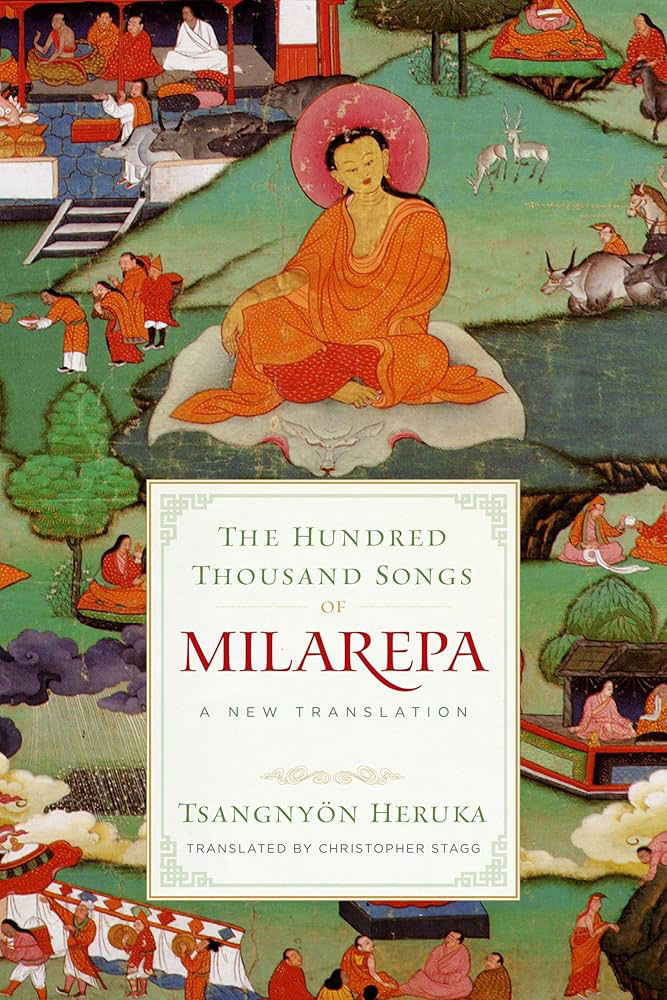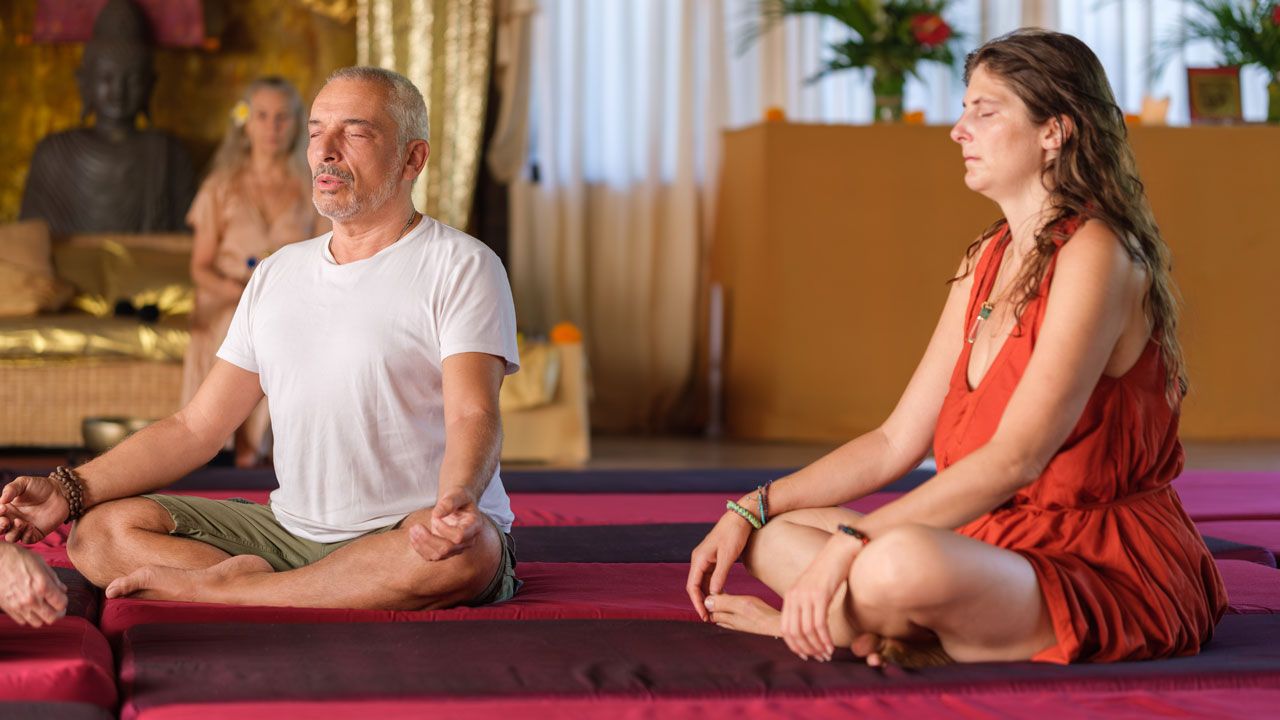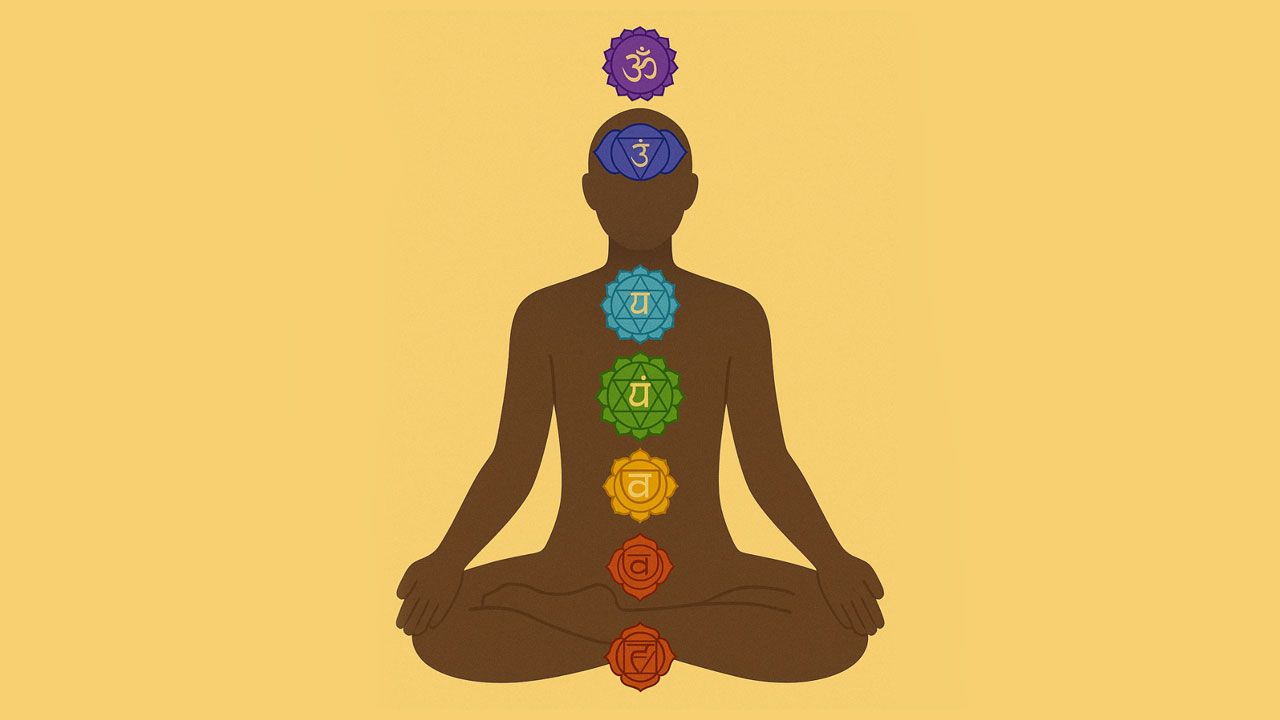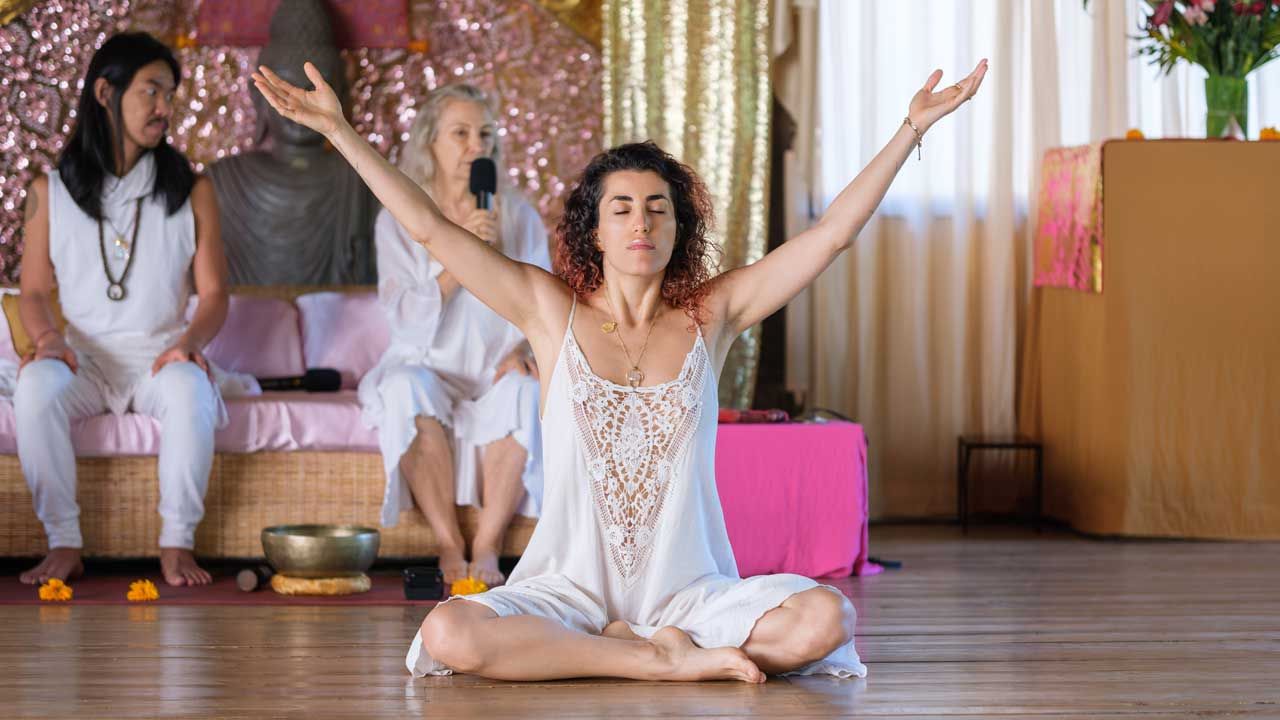Who Was Milarepa? A Deep Dive into Tibet’s Most Beloved Saint
Nov 11, 2025
Milarepa began in darkness. Trained in sorcery, he called down storms to kill the relatives who stole his family’s home. Dozens died, and instead of peace, he found only dread. He had avenged his mother, but condemned himself.
What came next was a need to burn through the consequences he had set in motion. That urgency led him to Marpa, a teacher who offered no comfort, only method. What Milarepa received was the full transmission of a yogic path designed for transformation.
This is the life of a man who carried the weight of karma into the mountains and returned with realization that still shapes one of Tibet’s most vital lineages.
Historical and Cultural Setting
Milarepa was born in 11th-century Tibet, during a period of political fragmentation and spiritual reconstruction. The unified Tibetan Empire had collapsed two centuries earlier, leaving no central government, no single religious authority, and no royal patronage system to support the spread of Buddhism.
In the absence of a monastic network, Buddhist practice was preserved by individual lineages and yogic practitioners who operated independently, often outside formal institutions. Some were householders, while others lived in retreat. Many held fragments of transmission passed down orally. In the eastern and central regions of Tibet, pockets of tantric practice survived through private instruction.
This climate gave rise to what became known as the phyi dar, the Second Diffusion of Buddhism in Tibet. Unlike the earlier wave of translation work during the Tibetan Empire, this period was defined by small groups of committed practitioners traveling to India on foot to study with established masters in tantric universities.
Key Indian centers included Vikramashila, Odantapuri, Pullahari, and Nalanda, places where yogic systems like the Hevajra Tantra, Chakrasamvara, Vajrayogini, and Mahamudra were still taught in living lineages. These Tibetans returned with full transmissions of empowerments to carry them forward without distortion.
Life Story: Loss, Abuse, and the Turning Toward Darkness
Milarepa was born into privilege. His mother, Tseringma, gave birth to Milarepa and his younger sister. His father was a modest landowner with wealth enough to secure the family’s place in the community of Gungthang. When Milarepa was still a child, his father fell ill and died. With no adult male heir, the property was left under the care of Milarepa's uncle and aunt until Milarepa came of age.
However, Milarepa's uncle became the main instigator in seizing the estate, and together with his wife, reduced his mother and sister to servitude. The sister in law played a significant role in the family dynamics and inheritance dispute, further complicating matters. Milarepa grew up watching his mother and younger sister suffer.
In 11th-century Tibetan society, land was inseparable from social standing. Without it, Milarepa and his immediate family were no longer protected. His mother, Tseringma, carried the resentment openly. She told her son, directly and repeatedly, that if he ever had the chance, he must avenge them.
So, as a young man, Milarepa was sent away to learn the occult arts. This wasn’t unheard of, sorcery was a known path in Tibetan folk culture, often practiced in secrecy, sometimes aligned with Bon traditions. After years, the training was successful. He returned and waited for the opportune moment.
When his cousin’s wedding was held in the same house that had once belonged to his father, Milarepa invoked the elements, and a sudden storm tore through the region. The house collapsed in a landslide, destroying the wedding feast and killing thirty five people, those that had taken part in his family’s downfall, and innocent bystanders.
Milarepa returned home to a mother who praised his obedience, and to a conscience that had begun to fracture. He had done what was asked, but the weight of what he had done didn’t disappear. He began to fear what would happen to him in the next life and the negative karma he had accumulated. He knew the logic of karma, even if he hadn’t yet tasted the Dharma. What you cause, you inherit. He had caused death, and the endless cycle of life's round (samsara) now loomed before him.
In this state of fear, Milarepa began to seek a teacher to find a way out of the consequence he had created. His path would lead him toward Marpa. But before the pilgrimage, there was only a boy trained in darkness, standing at the edge of his own ruin, no longer sure that revenge had delivered anything except deeper pain, and uncertain about the fate of his future lives.
From Karma to Realization: Milarepa’s Training, Retreat, and Transmission
The storm he had summoned had done its work. The deaths had occurred, and nothing in him had changed. He knew that this karma would not leave on its own. What he needed was a method strong enough to meet the consequences he had set in motion. So he began searching, offering his story openly to teachers along the way. Most turned him away, some offered fragments of practice, but none gave him the path he was seeking.
Eventually, someone told him about Marpa, an unusual teacher living in Lhodrak. A householder who had traveled to India and received direct transmission from masters like Naropa and Maitripa. A man who held the Hevajra Tantra, the Six Yogas, and the full Mahamudra lineage. Marpa directed Milarepa's spiritual training with intentional guidance. But Marpa did not teach lightly. Students said he demanded complete endurance, breaking people open before giving anything.
When he arrived, Marpa did not welcome him as a student. He gave Milarepa stone and mud, ordering him to build a tower by hand. When it was done, he told him to tear it down. Then build it again. Then tear it down. This continued for years, with no lesson or explanation as to why Milarepa was doing this. His body broke down, but his commitment didn’t waver. Marpa watched him. Marpa had to completely break down everything that Milarepa had ever been.
When the purification was complete, Marpa initiated Milarepa into Tummo, the generation of internal heat through breath and control of subtle energy. He gave him Mahamudra, the instruction to rest awareness in its natural state without concept. He trained him in deity yoga, dream yoga, and retreat methods.
Milarepa went into retreat immediately. His first site was Drakar Taso, a cliffside cave above the Nyanang Valley. There, the cotton clad ascetic lived on boiled nettles and snowmelt, which resulted in his skin turning green, which added to his legend. He made bedding from brush, blocked wind with loose stones, and engaged in rigorous meditation practice in complete isolation.
His solitary meditation in the mountain retreat was central to his transformation. He followed the sequence Marpa had taught, Tummo at dawn, visualization and mantra through the day, Mahamudra until night. When his body collapsed, he practiced lying down. When visions came from hunger or exhaustion, he stayed with them until they dissolved.
From Drakar Taso, he moved between Lapchi, Chubar, and eventually Mount Kailash. At Kailash, a wandering sorcerer challenged him to a contest of yogic power. The man rose into the sky on a drum. Milarepa remained still, then rose on a beam of light. He reached the peak first. When the man arrived, he invited him to stay and train.
His practice continued in strict sequence. At dawn, he retained his breath while visualizing fire rising from his navel into the central channel. The heat allowed him to sit unclothed in snow. Between breath sessions, he practiced non-fixated awareness, observing thought and sensation without grasping.

A Thousand Songs of Realization: Songs of Milarepa
Milarepa’s teachings emerged in the form of spontaneous songs. He spoke them aloud when disciples gathered at the mouth of his cave, when pilgrims climbed the path with offerings, and when villagers called to him from the slopes below. The verses came in response to direct questions, to weather shifts, to memory and to realization. These songs were created, and sung in the spur of the moment.
These songs were preserved as The Gurbum, The Hundred Thousand Songs of Milarepa, a collection of instructional verses recorded by students into written form. Each song carries a clear instruction on retreat, mind training, karmic purification, or the recognition of awareness. Milarepa had lived every instruction he gave through his verses.
Milarepa’s language came from the environment he practiced in. He referenced cliffs, crows, snowmelt, bones, fire embers, and mountain winds not to beautify the teachings, but because these were the things around him as realization took root. When he taught impermanence, he spoke of thawing frost. When he spoke of craving, he described the moment hunger twisted the belly.
The songs were first passed orally. His disciples memorized them, repeated them, and carried them into other regions. Some were transcribed later by students such as Rechungpa and preserved in the early Kagyu tradition. Others entered the Tibetan oral canon, repeated by retreatants and hermits who used them as practical reminders.
Encounters with Demons and Trials
In retreat, Milarepa reported confrontations with forms that were experienced with full sensory force. These appearances arose after weeks of uninterrupted practice, when the breath had deepened, when the senses had no external engagement, when the karmic residue of his early life had nowhere left to hide.
He described full-body paralysis during meditation, moments where cold entered through the soles of his feet and climbed slowly to the crown of his head. He could not move. His breathing shortened to shallow gulps. He remained seated, rooted at the navel center, maintaining internal fire through breath retention. The sensation passed only after full stabilization. In another account, he saw a figure in the entrance to his cave, a humanoid form that didn’t vanish when he opened his eyes. The figure remained unmoving. He grounded his awareness in the lower belly, lengthened the exhale, and stabilized his gaze. The shape eventually dissolved.
Milarepa taught that these forms were karmic projections, energetic residues of previous actions, especially those linked to his training in black magic. He had deliberately cultivated intense mental states, rage, precision, intention to harm. The consequences of these patterns had to be burned off through confronting them as they arose.
Milarepa had been trained in exact interventions, of breath retention at the navel center to stabilize the lower wind (apana), fixed gaze to steady the mind (trataka), and energetic alignment through subtle body awareness. He followed a clear sequences, returning to breath, identifying the location of the disturbance in the body, anchoring awareness into that region, and holding the view until the reactive pattern completed.
This process repeated itself for years. The apparitions came during specific phases of retreat: after long silence, during fasting, or at the point when stillness deepened into absorption. Some figures came with voices. Some brought suffocating heat or external cold. Some whispered doubts, others mimicked people from his life. Milarepa treated them all the same. He did not seek to understand them. He allowed them to rise, recognized them as mind-made forms, and remained still until they passed (click here to see an interesting video about his experience).
His famous line, “I see you, illusion”, means if the form is recognized, then the origin can be known. The breath remains calm and the posture does not shift. In this way, each projection loses power and the mind returns to its natural state.
Milarepa’s Students & Disciples
Gampopa: His Foremost Disciple

Gampopa, originally named Sonam Rinchen, was a trained physician and a householder with a family in central Tibet. Before he ever heard of Milarepa, he had already completed monastic ordination in the Kadampa tradition and studied extensively in the structured practices of Buddhist ethics, mental training (lojong), and scholastic discipline.
Gampopa’s turn toward deep practice came through the personal devastation of his wife and children who died suddenly during a local epidemic. The loss dismantled everything he had relied on. His former studies no longer felt sufficient, and he began to search for a teacher who could show direct realization.
It was through spoken accounts, travelers, practitioners, pilgrims, that he heard of Milarepa, a yogi who lived in remote caves and offered no public teachings, yet was said to have reached full awakening through retreat alone. Gampopa set out to find him. The journey took time. Milarepa was not stationed anywhere, his location changed with the seasons, depending on retreat conditions. When Gampopa finally arrived, Milarepa didn’t accept him immediately.
Milarepa questioned him. He examined Gampopa’s training, his intentions, and his attachment to form. Gampopa’s Kadampa background made him fluent in Buddhist philosophy and structured ritual, but Milarepa wanted to see whether he could receive instruction without falling back into conceptual analysis. Over time, Gampopa proved he could. He submitted to the rhythm of Milarepa’s transmission.
The relationship unfolded over several years. Gampopa lived in proximity to Milarepa, receiving instruction in Mahamudra view, deity yoga, inner yogic methods, and the conduct of a practitioner whose realization had become stable. When the time came, Milarepa transmitted the full lineage and confirmed Gampopa as his principal disciple.
Milarepa Quotes






Milarepa’s Death and Final Instructions
Milarepa spent the last part of his life in the Chuwar Valley, in a cave overlooking the highlands of Nyanang, toward the Himalayas. His body had become skeletal from decades of retreat. He moved with difficulty but remained lucid. His students came and went, many seeking final clarification on the instructions they had received earlier in life.
At this point, Milarepa no longer created new methods.Gampopa stayed close, along with several female disciples and yogis who had trained under him in earlier retreats. The Namthar records the arrival of a lay patron from Nyanang, someone who had once been aligned with another teacher. He brought a copper bowl filled with fermented curds, a common offering in that region. Milarepa accepted the bowl and ate. That night, he fell ill with severe stomach pain and nausea. Gampopa questioned him gently. Milarepa confirmed the curds had been poisoned, but said nothing else.
When asked why he had accepted them, knowing the donor’s intentions, he responded simply:
“This body has completed its task. The time has come.”
In the days that followed, Milarepa called his disciples and gave them precise instructions. To Gampopa, he said: “do not teach until the view is stable”. To Rechungpa, “never correct others unless the mind is resting in awareness”. To his female students, “practice without waiting for permission”.
In his final teaching he described the fatigue of the body, the sharpness of the view, and the mind as a space that remains after form has departed.
“This body is like a guesthouse. The guest has left. The space remains.”
Milarepa lay down on his right side in the traditional posture for conscious dying. His eyes remained half open, angled toward the sky. According to those present, his skin stayed warm long after the pulse had stopped.
Texts and Translations
Milarepa’s teachings were preserved through two primary bodies of work: his Namthar, the spiritual biography, and the Gurbum, the collected songs. Neither was written by Milarepa himself. His students carried his voice through memory, oral repetition, and later documentation. These texts form the backbone of his presence in the Tibetan literary and spiritual landscape. They are not hagiography in the modern sense. They are records of instruction, transmission, and realization shaped into narrative and verse.
Primary Tibetan Texts

The Life of Milarepa (Mi la ras pa’i rnam thar) was composed by Tsangnyön Heruka in the 15th century. He was a wandering yogi and lineage holder in the Kagyu tradition, known for his fierce clarity and devotion to oral tradition. He gathered the teachings and stories preserved by Milarepa’s students, especially from the line of Gampopa, and shaped them into a single, coherent arc. The Namthar is a manual in narrative form, detailing karma, hardship, purification, transmission, retreat, realization, and death in a structure that mirrors the path.
The Hundred Thousand Songs of Milarepa (Mi la’i mgur ’bum) preserves the oral teachings Milarepa gave throughout his life. Each song was composed spontaneously in response to a moment: a question from a disciple, a vision during practice, an encounter with a stranger, or an internal shift in retreat. The songs were memorized by his students and carried forward through recitation.
English Translations and Scholars
Milarepa’s Namthar and songs have been translated multiple times. Among the most respected is Andrew Quintman, a scholar of Tibetan literature and professor at Yale. His edition of The Life of Milarepa is based on close study of the Tibetan texts, with attention to rhythm, nuance, and the oral lineage behind the writing. Quintman’s work preserves the tone of Tsangnyön Heruka, lean, direct, and devotional without sentiment.
Christopher Stagg and Brian Cutillo contributed significant translations of Milarepa’s songs. Their work brings the voice of Milarepa into English with minimal distortion, maintaining the clarity and urgency of the original verses.
FAQ
Is Milarepa based on a real person?
Yes. Milarepa was a historical figure born in the 11th century in what is now known as Western Tibet. His life is preserved in the biographical corpus composed by Tsangnyön Heruka, based on oral accounts from Milarepa's students. Far from myth, Milarepa’s story is rooted in the Tibetan landscape, politics, and spiritual culture of the time. His journey from black magic and revenge to realization and enlightenment has made him one of Tibetan Buddhism’s most inspiring life stories.
What happened to Milarepa after he climbed Kailash?
After the famed contest at Mount Kailash, where Milarepa rose on a beam of light, he continued his solitary meditation practice in mountain retreats across Southern Tibet. He moved between caves in Lapchi, Chubar, and Drakar Taso, where he deepened his mastery of Tummo (yogic heat), Mahamudra, and deity yoga. These were daily disciplines shaped by direct instruction from his teacher Marpa and the Indian masters before him. His life after Kailash was not about miracles, but continued purification, devotion, and dedication to sentient beings.
Why did Milarepa turn green?
During years of retreat in remote Himalayan caves, Milarepa survived on mountain stream water and boiled nettles. With no provisions and no disciples yet, his skin turned green from this sparse nettle diet, earning him the name “the cotton clad yogi with green skin.” It reflected the depth of his solitary meditation and the physical toll of practicing in extreme isolation while burning through negative karma from his earlier life.















